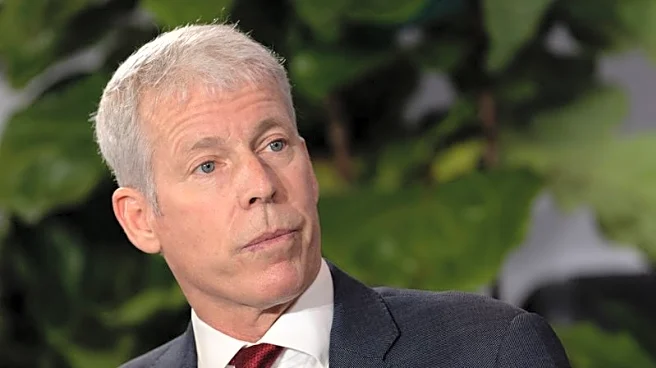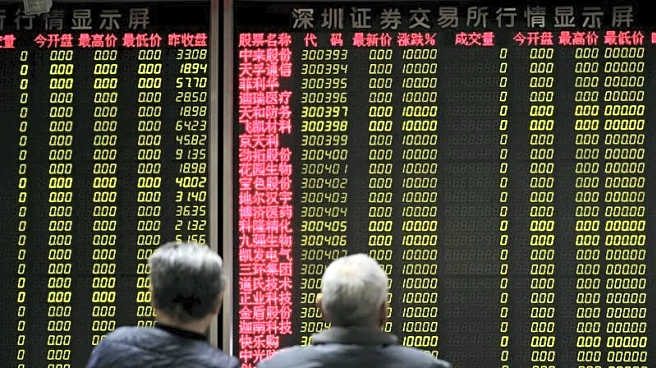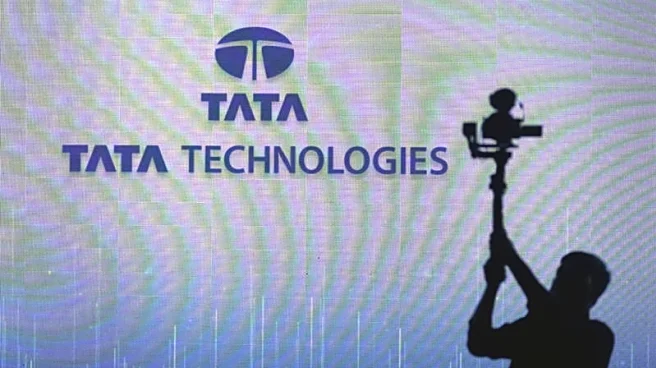What's Happening?
The US economy is experiencing significant growth driven by investments in artificial intelligence (AI), despite underlying stagnation in other sectors. AI infrastructure spending has increased by $400
billion since 2022, with a notable focus on information processing equipment, which saw a 39% annualized growth rate in the first half of 2025. Harvard economist Jason Furman noted that while investment in information processing equipment and software accounts for only 4% of US GDP, it was responsible for 92% of GDP growth in the first half of 2025. This surge in AI-related investments has helped prevent the US economy from slipping into recession, as other sectors, such as manufacturing and services, show signs of stagnation. The US stock market has seen record highs, with AI companies accounting for 80% of stock gains in 2025, attracting foreign investments totaling $290 billion in the second quarter.
Why It's Important?
The reliance on AI investments for economic growth highlights a potential vulnerability in the US economy. While AI-driven growth has prevented a recession, the stagnation in manufacturing and services sectors poses risks. The concentration of economic gains in AI could lead to a financial bubble, similar to past economic crises. Additionally, the focus on AI investments may not translate into immediate productivity gains, raising concerns about long-term sustainability. The disparity in economic benefits, with top earners spending more while others face a cost-of-living crisis, underscores the uneven impact of AI-driven growth. The potential for a stock market correction looms if AI investments fail to deliver expected returns.
What's Next?
The future of the US economy hinges on the ability of AI investments to deliver substantial productivity and profitability gains. If AI-driven growth does not materialize as expected, a stock market correction could occur, impacting the broader economy. Companies like OpenAI are under pressure to generate sufficient revenue to cover rising costs, with significant investments in infrastructure and talent. The potential for a financial bust exists, but new players may acquire technology at lower prices, driving innovation through 'creative destruction.' The adoption of AI technology remains low, and its impact on productivity growth may only be realized after a financial crash.
Beyond the Headlines
The ethical and environmental implications of AI investments are significant. The energy consumption of AI data centers, such as those operated by OpenAI, is substantial, contributing to rising electricity prices and environmental concerns. The impact of tariffs imposed by the Trump administration further complicates the economic landscape, with import prices rising and affecting consumer costs. The broader societal impact includes increased youth unemployment and wage stagnation, highlighting the need for balanced economic policies that address disparities and ensure sustainable growth.













